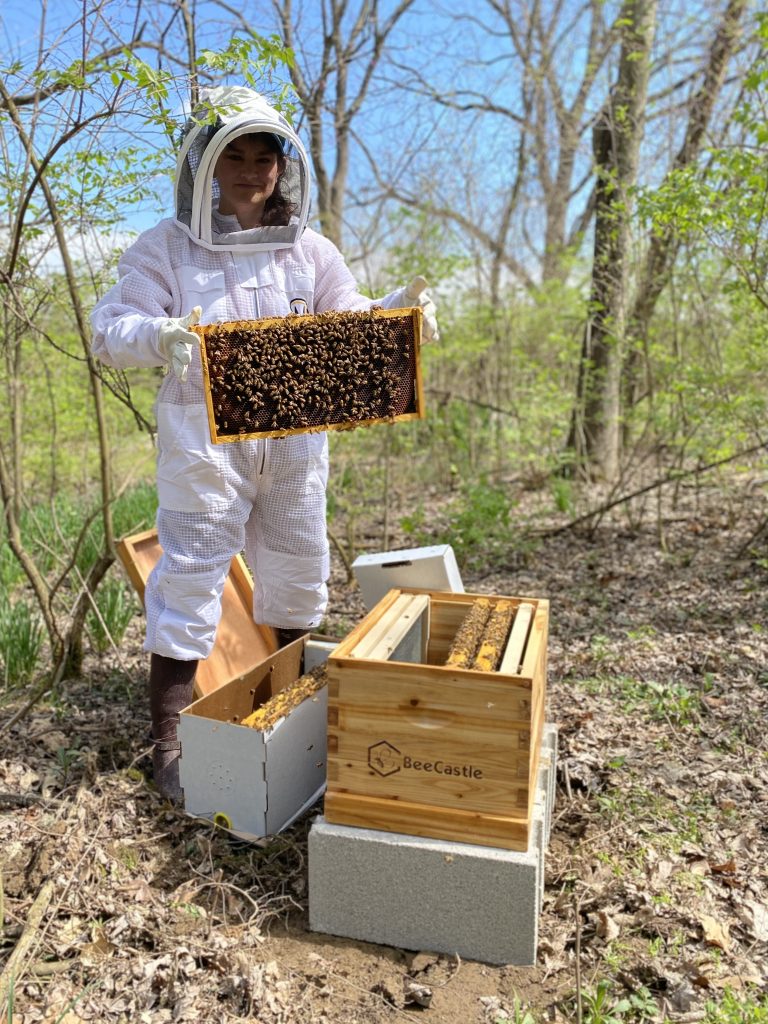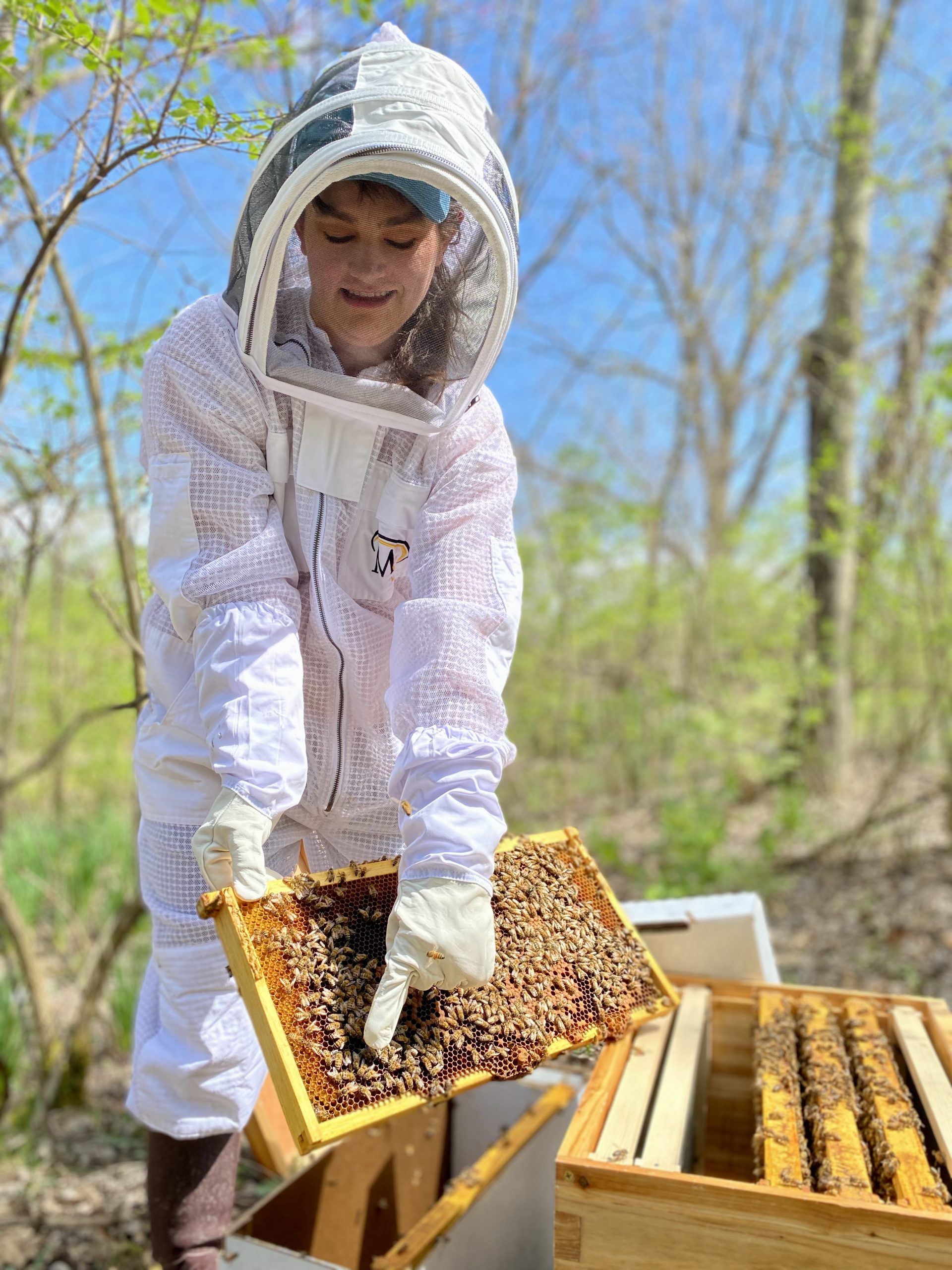I’d never given much thought to where the bees would come from until it actually became a possibility to keep them. So where do you get them, and what does all of this different terminology mean?
There’s a few different options for acquiring bees, as it turns out.
You can order them through the mail! Yes, really. You can order bees online and the post office will call you when your package of bees have arrived at the post office for pickup. As far as I’m aware, the US Postal Service is the only shipping service that will transport live animals, bees being included in that category.
Another option, and the one that I opted for, was to find a local beekeeper and pick up your bees in person. If you are fortunate enough to have a beekeeper friend that is going to split their hive, you could potentially get some free bees – and when you are in the position to split your hives in the future, you should pay it forward and help another new beekeeper out.
The next option is to catch a wild swarm. I have not tried this method, but I have read extensively about it. The main idea is to get a small hive box, suspend it up in a tree where a swarm may be congregating or passing by, bait it with a swarm attractant such as lemongrass oil, and then hope that they decide it’s a good place to stay and start setting up their home. This leaves more to chance, but it also gets you free(ish) bees that are likely a strong colony that is acclimated to your particular region.
The terminology can be a bit confusing when ordering bees, I’ll try to break it down a bit here.
A package of bees is typically measured in weight, and you’ll receive about 3 lbs of bees. These are usually a mesh box that contains loose worker bees (no comb) and one mated queen. The queen will most likely be in a ‘queen cage’ that will make the worker bees want to stay nearby her – this will come in handy when you transition the package of bees to your hive box. The worker bees do not want to leave the queen. For installation, you will take the queen cage and carefully place it in your hive box, usually suspending it between frames. Then you literally just dump the package of bees in – as disconcerting as this can be, it’s the best and most efficient way to do this. The workers will clump around the queen. Depending on your queen cage, you’d either have to manually open it in a couple of days once they’re more established in the hive, or if there is a rubber or cork stopper, you can take a mini-marshmallow and replace the stopper with the marshmallow. The workers will eat through that and free the queen. The downside of ordering a package is that without brood (baby bees) included, the colony could just up and decide to leave the hive you’ve provided in search of somewhere else, then you’re out for $150-200 worth of bees that you’re unlikely to ever see again.
A ‘nuc’ or ‘nucleus’ of bees is essentially a mini-hive. It is a few frames with drawn comb (where the bees have built the wax into hexagonal shapes to store honey or brood). The drawn comb will have some honey stores and different stages of brood. The nuc comes with a laying (mated) queen, worker bees, and the frames of brood. Because of the presence of the brood, the queen and worker bees are unlikely to leave the hive in search of another. To install a nuc all you need to do is place the frames inside of your hive box. Since I have 8 frame hive boxes and the nucs I bought came with 5 frames, I just placed the 5 frames in the boxes and added the blank 3 frames that I already had to fill the box.

I’ve been very happy with the nucs that I bought from a local beekeeper. Adding to the value of the purchase, the beekeeper will personally answer questions that I have come up. Beekeeping can be VERY complicated and there is always more to learn, so this is a nice option to have!

